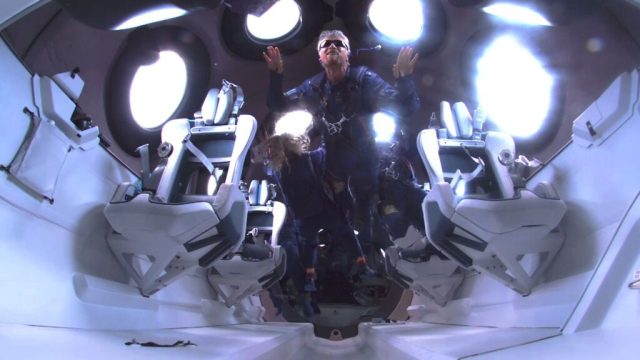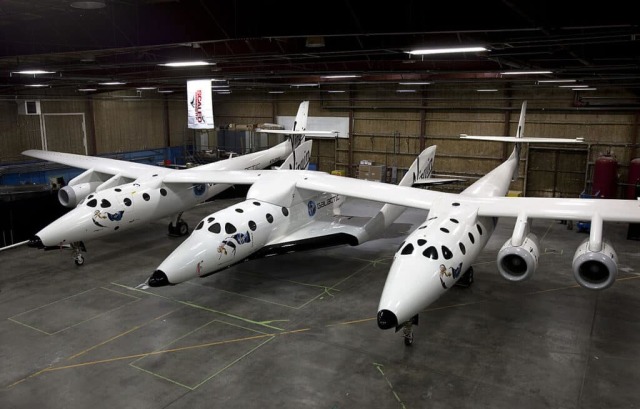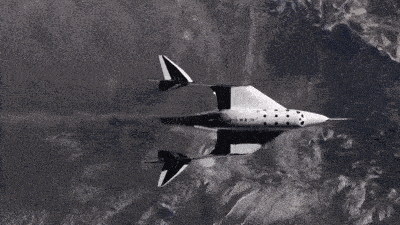The emergence of many commercial players in the global space industry has brought not only the long-awaited progress of the industry, but also problems. For example, it turned out that it is more difficult to explain why the deadlines for the implementation of plans are delayed for many private investors than for several state customers. And the enthusiasm of the founder of a space company always works as a "signal" for the stock market and risks looking like fraud if optimistic forecasts are destroyed by the harsh reality of engineering problems.
According to [...] Reuters, a class action lawsuit by Virgin Galactic shareholders against the company's management was accepted by the court of the Eastern District of New York. Having previously studied the case, Judge Allyne Ross rejected most of the claims in the document. However, she left the main thing — the demand to return $ 301 million in losses due to sharply cheaper shares (ticker SPCE ). To do this, the plaintiffs must prove that the head of Virgin Galactic really hid from the public the technical problems of the SpaceShipTwo spaceplane. And also to find confirmation that his optimistic statements about overcoming engineering difficulties in the development of the ship were a deliberate deception to raise the value of the company's securities.
The case contains two main claims of shareholders against the British billionaire Richard Branson, the founder and a key public figure. Since his words affect the image, as well as the public's perception of the company's activities and prospects, they have a particularly strong impact on the value of SPCE shares. Both claims are related to technical problems that were identified following the results of the landmark flights of the VSS Unity spaceplane — in 2019 and 2021.

Richard Branson (center) and other crew members of SpaceShipTwo's first "full-fledged" tourist flight into spaceImage Source: Virgin Galactic
In February 2019, VSS Unity flew for the first time not only with two pilots, but also with a passenger on board (Beth Moses, the company's chief astronaut instructor). The mission itself went flawlessly, the spaceplane rose to an altitude of 89.9 kilometers and reached a speed of Mach 3.04. According to Branson, this was a major achievement on the way to providing regular suborbital space tourism services. However, later, information about serious damage to the aircraft, which has not yet been confirmed by Virgin Galactic representatives, appeared.
The incident was described by New Yorker journalist Nicholas Schmidle in his book "Test Gods" (Test Gods: Virgin Galactic and the Making of a Modern Astronaut). To prepare it, he worked inside Branson's company for four years and witnessed not only engineering victories, but also, allegedly, some questionable practices. A brief description of the problems of 2019 is based on this book by The Washington Post. An alternative confirmation of this story based on its own sources was published by the portal Parabolic Arc.
It is claimed that after the landing of VSS Unity on February 22, 2019, the spaceplane went for more than a year of revision for a reason. Damage was found in its right tail stabilizer, which could lead to the complete destruction of the complex tail. The problem was hidden in incorrect pre—flight preparation - contrary to the instructions of the technicians, they did not check the ventilation openings. As a result, when climbing to a height, the air contained inside the structure did not escape from it, and the materials could not withstand the load. Moreover, it was decided not to report problems publicly at the highest level, so as not to spoil the image of the company. The court will check this version — all the details about the damage and the method of their further prevention, as expected, were received by the US Federal Aviation Administration (FAA). During the litigation, only one request will be enough to get the department's report.

SpaceShipTwo spaceplane mounted on White Knight Two. Photo of 2009, that is, it has never flown at that time VSS EnterpriseImage source: Virgin Galactic, Mark Greenberg, Wikimedia
Another incident is much less serious, although it also raises questions. In 2021, Branson personally tested VSS Unity — it was the first flight with a full load (although the spaceplane is designed for six passengers, there were only four seats). During the descent back to the spaceport, the ship deviated from the trajectory for a few seconds and left the pre-designated safety zone. It did not pose any threat, but it raised questions from the FAA and a temporary ban on flights. The agency demanded that Virgin Galactic figure out what caused the deviation and either fix the problems or request more security zone in the future. The shareholders' claim is that Branson called that mission "flawless", although it is obvious that there were shortcomings.
How the trial will end is an interesting question. Lawyers from both sides have not yet given any comments. And the prospects of the lawsuit are vague, since there are many assumptions in its known details and the prosecuting party will have to prove a number of key details. Moreover, apparently, in addition to indirect confirmations, no others will be found. At the same time, Virgin Galactic absolutely cannot be called a company that hides any of its mistakes. As examples — the explosion at the tests in 2007 and the collapse of the VSS Enterprise. But she is definitely not working with the public quite correctly either.
An additional lesson that can be learned from this story to all participants of the so—called new space race is not to become a public company before working out all the basic technical solutions. And it's better to always stay private. Like Elon Musk's SpaceX, which depends very little on investor sentiment, since their number is limited to several companies, funds and individuals. In case of any failures or controversial statements by the head of the company, its shares do not start to jump in price, which does not lead to the need to urgently block the negative in order not to go bankrupt.

